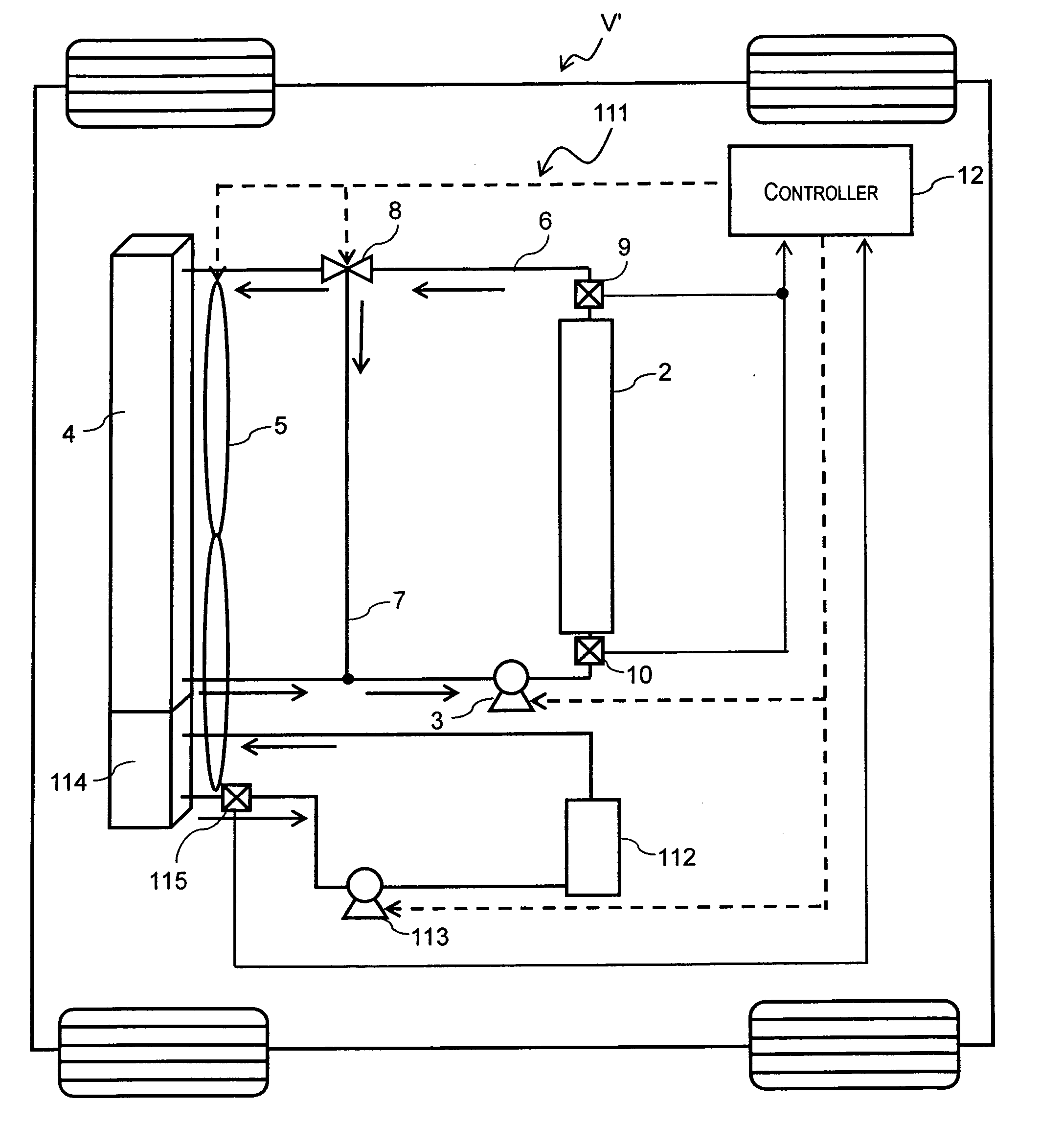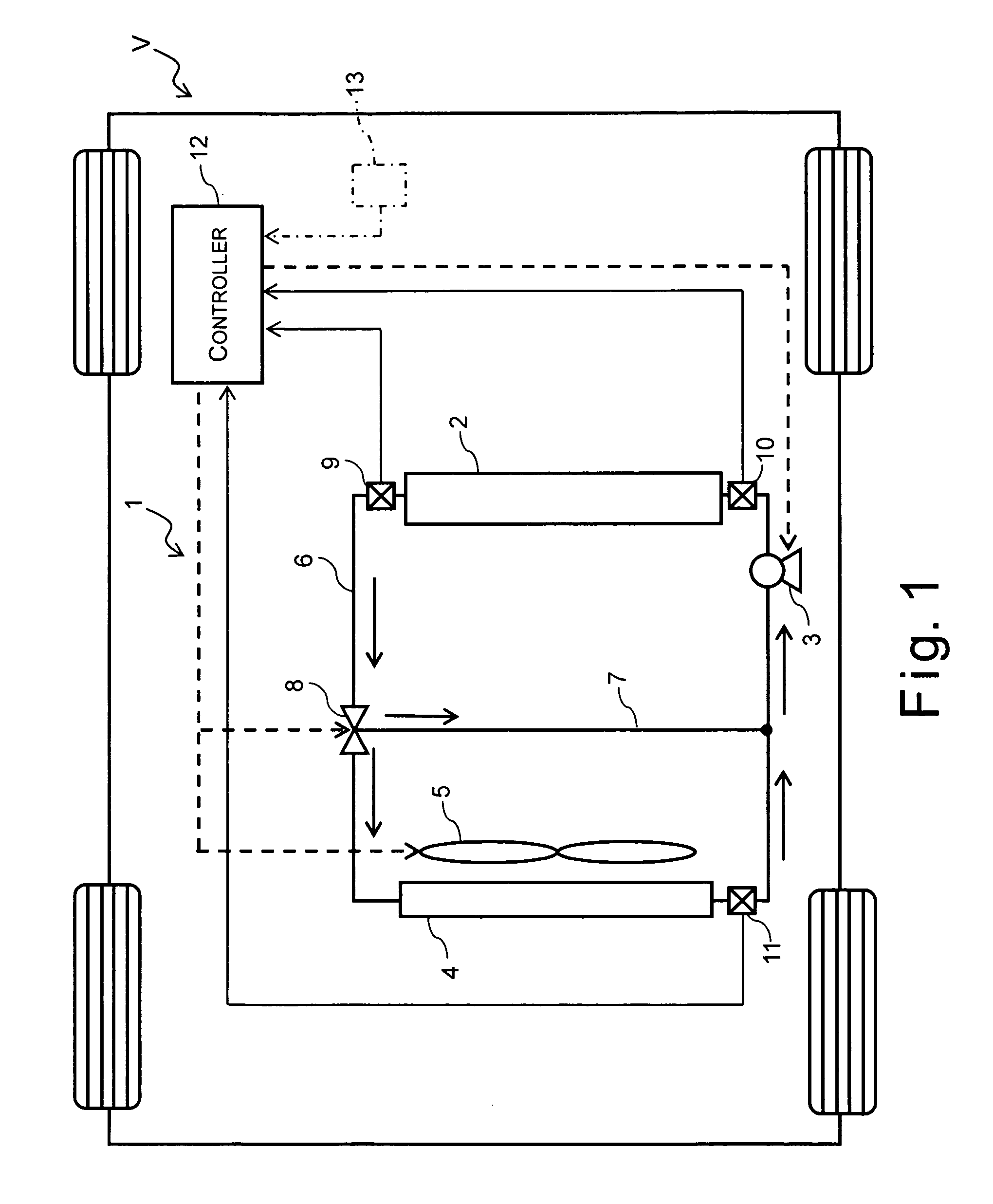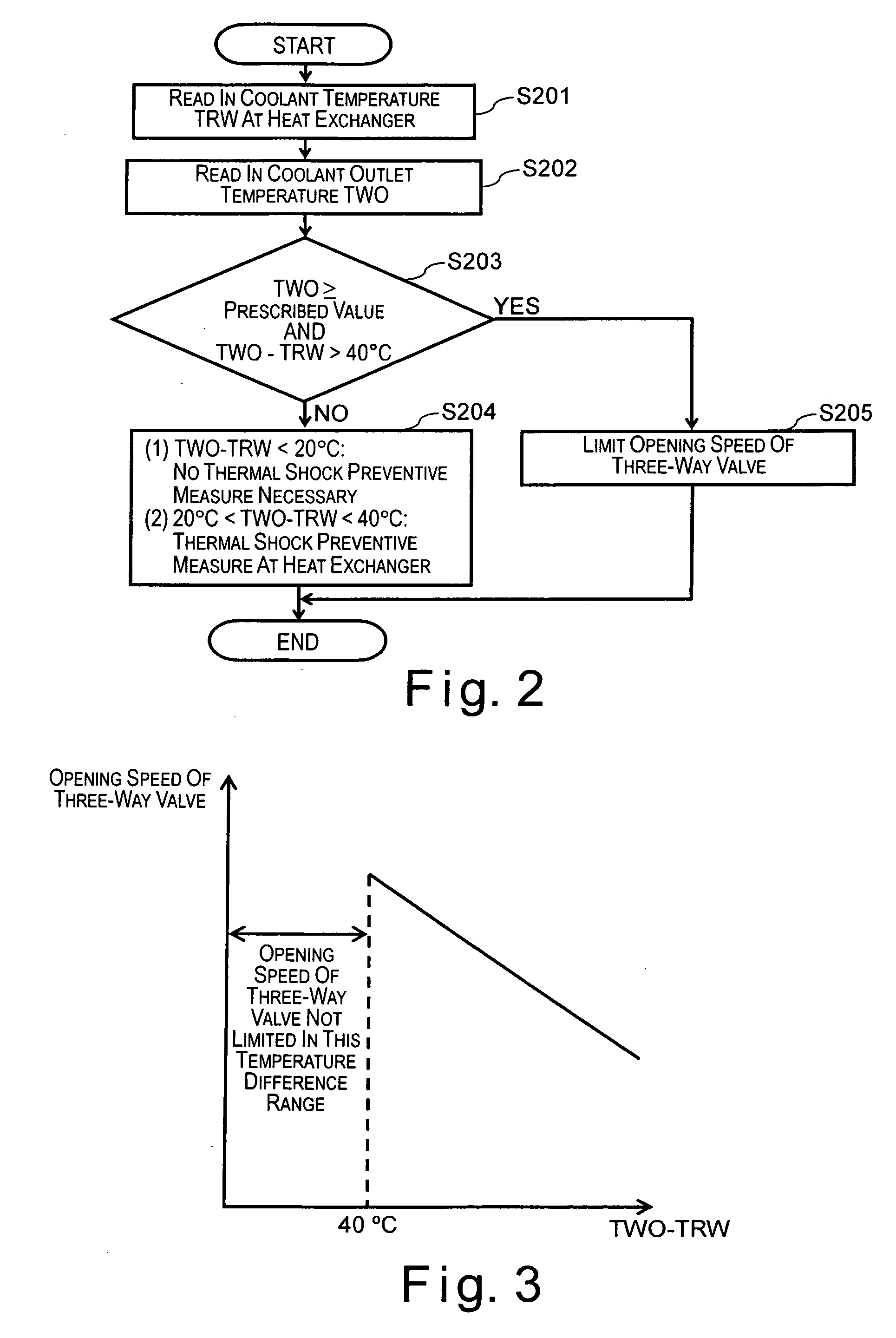Vehicle cooling system
a technology for cooling systems and vehicles, applied in the direction of lighting and heating apparatus, process and machine control, instruments, etc., can solve the problems of poor thermal shock performance, and heat exchangers will undergo thermal shock, so as to increase the weight and increase the cost
- Summary
- Abstract
- Description
- Claims
- Application Information
AI Technical Summary
Benefits of technology
Problems solved by technology
Method used
Image
Examples
second embodiment
[0053] Referring now to FIGS. 4 and 5, a second embodiment of the present invention will now be explained. In view of the similarity between the first and second embodiments, the parts of the second embodiment that are identical to the parts of the first embodiment will be given the same reference numerals as the parts of the first embodiment. Moreover, the descriptions of the parts of the second embodiment that are identical to the parts of the first embodiment may be omitted for the sake of brevity.
[0054] The second embodiment of the present invention is basically identical to the first embodiment except for the control process executed in the controller 12. More specifically, the control process in accordance with the second embodiment is identical to the control process in accordance with the first embodiment illustrated in the flowchart of FIG. 2 except that an additional control is executed after step S205 of FIG. 2. Thus, the constituent components of the vehicle cooling sys...
third embodiment
[0064] Referring now to FIG. 6, a third embodiment will now be explained. In view of the similarity between the first and third embodiments, the parts of the third embodiment that are identical to the parts of the first embodiment will be given the same reference numerals as the parts of the first embodiment. Moreover, the descriptions of the parts of the third embodiment that are identical to the parts of the first embodiment may be omitted for the sake of brevity.
[0065] The third embodiment of the present invention is basically identical to the first embodiment explained above except for the control executed in the controller 12. Thus, the constituent components of the vehicle cooling system 1 in accordance with the third embodiment are the same as those of the first embodiment shown in FIG. 1 and detailed descriptions thereof are omitted for the sake of brevity.
[0066]FIG. 6 is a flowchart showing the computer processing executed in the controller 12 of the vehicle cooling syste...
fourth embodiment
[0076] Referring now to FIGS. 7 and 8, a fourth embodiment will now be explained. In view of the similarity between the first and fourth embodiments, the parts of the fourth embodiment that are identical to the parts of the first embodiment will be given the same reference numerals as the parts of the first embodiment. Moreover, the descriptions of the parts of the fourth embodiment that are identical to the parts of the first embodiment may be omitted for the sake of brevity.
[0077] The fourth embodiment of the present invention is basically identical to the first embodiment explained above except for the control executed in the controller 12. Thus, the constituent components of the vehicle cooling system 1 in accordance with the fourth embodiment are the same as those of the first embodiment shown in FIG. 1 and detailed descriptions thereof are omitted for the sake of brevity.
[0078]FIG. 7 is a flowchart showing the computer processing executed in the controller 12 of the vehicle ...
PUM
 Login to View More
Login to View More Abstract
Description
Claims
Application Information
 Login to View More
Login to View More - R&D
- Intellectual Property
- Life Sciences
- Materials
- Tech Scout
- Unparalleled Data Quality
- Higher Quality Content
- 60% Fewer Hallucinations
Browse by: Latest US Patents, China's latest patents, Technical Efficacy Thesaurus, Application Domain, Technology Topic, Popular Technical Reports.
© 2025 PatSnap. All rights reserved.Legal|Privacy policy|Modern Slavery Act Transparency Statement|Sitemap|About US| Contact US: help@patsnap.com



